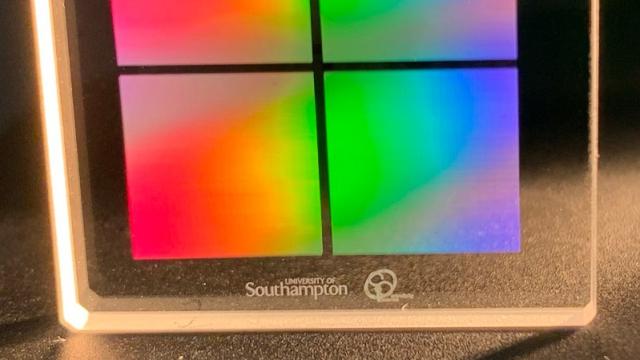By switching from red lasers to blue lasers with a finer beam, the storage capacity of DVDs went from 4.7GB to 25GB to allow Blu-ray discs to hold movies encoded in HD resolutions and beyond. Last week, researchers from the University of Southampton in the UK revealed the next big breakthrough in disc storage capacities, potentially allowing them to hold up to 500TB.
When it comes to long-term storage of digital files that don’t need to be readily accessed, gigantic hard drives aren’t actually the most popular solution. It’s a lot cheaper to rely on a medium that’s been around since the ‘70s: magnetic tape. A 12TB tape cartridge will set you back about $US100 (A$133), with the tradeoff being it takes a little longer to load files, and a basic tape cartridge reader runs around $US6,000 (A$7,982). What if the capacities of tape cartridges could be brought to discs that cost considerably less? At the moment you can get a blank Blu-ray disc for about a buck.
Since 2012, the researchers at the University of Southampton have been working with femtosecond lasers to increase the density of optical storage media. The laser produces powerful but very short pulses of light that etch data into the 3D structure of glass on a nanoscale level. The first breakthrough showing the technique could work managed to squeeze 40MB of data into a square inch of space, but in 2015 the researchers revealed they had pushed the technology to store 360TB of data onto a tiny glass disc that was incredibly stable and resilient — to the point of surviving 13.8 billion years at temperatures of up to 350 degrees Fahrenheit. The only issue was that the data writing technique was very slow, to the point of being impractical for legitimate data storage needs.
That brings us to 2021, with a new breakthrough that researchers are calling 5D data storage because of the multiple layers that make up the etched glass structures. In a recently paper published in the Optical Journal, the researchers detail how instead of using the femtosecond laser to write directly onto glass, the light it produced was used to create an “optical phenomenon known as near-field enhancement” that allows data to be written using weaker light pulses. So not only is less power needed to write and store data, but it can also be done at a faster speed: around 230KB of data every second. That’s nowhere near the speed of flash memory and other storage solutions, but data stored this way would be safe for as long as humanity needed it to be.
Using their improved techniques, the researchers were able to store 5GB of text data on a silica glass disc that’s roughly the same size as a DVD, with 100% accuracy when it came to retrieving that data afterwards. At the densities used, the glass disc could potentially hold up to 500TB of data, with some extreme patience required, as writing that much data would take close to 60 days. As a result, 5D data isn’t quite ready for primetime just yet, but it has already demonstrated some exciting potential, and has evolved and improved in less than a decade to almost being a practical solution. Billions of years from now, our descendants may still be able to appreciate the wonderful memes that floated around the internet in 2021.
Editor’s Note: Release dates within this article are based in the U.S., but will be updated with local Australian dates as soon as we know more.
